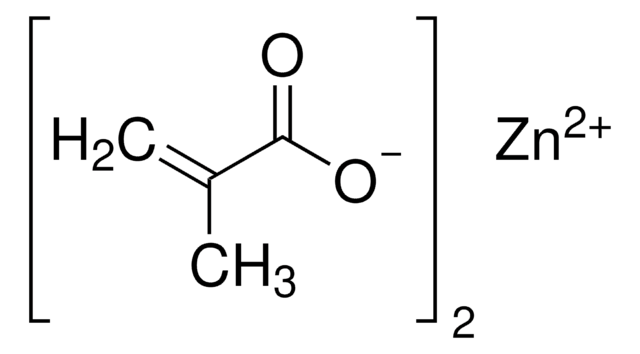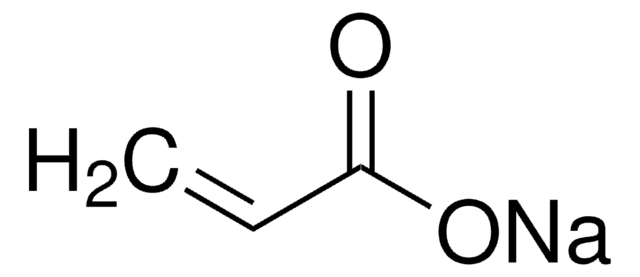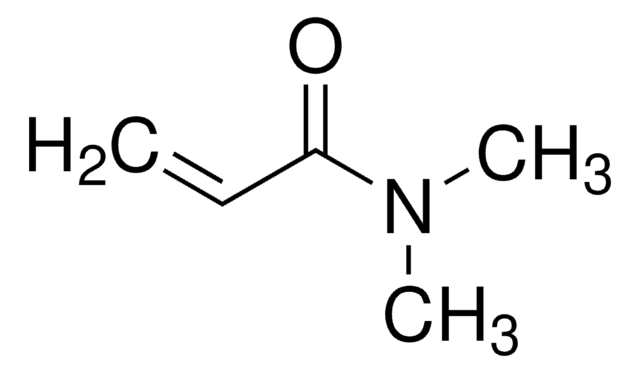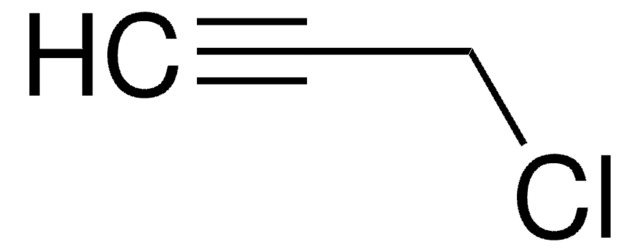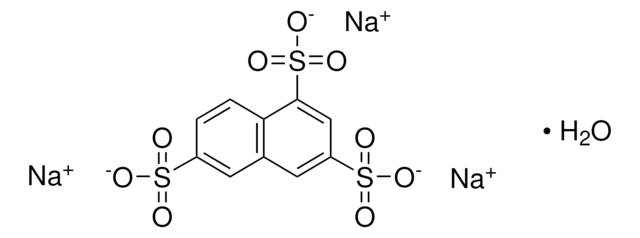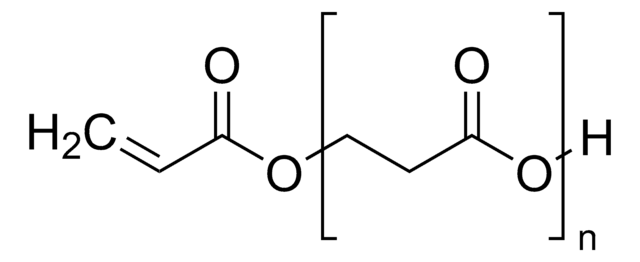모든 사진(2)
About This Item
Linear Formula:
(H2C=CHCO2)2Zn
CAS Number:
Molecular Weight:
207.50
EC Number:
MDL number:
UNSPSC 코드:
12162002
PubChem Substance ID:
NACRES:
NA.23
추천 제품
Quality Level
분석
98%
양식
powder
mp
240-244 °C (lit.)
SMILES string
C=CC(=O)O[Zn]OC(=O)C=C
InChI
1S/2C3H4O2.Zn/c2*1-2-3(4)5;/h2*2H,1H2,(H,4,5);/q;;+2/p-2
InChI key
XKMZOFXGLBYJLS-UHFFFAOYSA-L
일반 설명
Zincacrylate is a compound that belongs to the class of acrylate polymers, whichare known for their versatile applications in various fields, including biomedicine.In the biomedical field, zinc acrylate is primarily recognized for its use indental materials, drug delivery systems, and tissue engineering. In dental applications, zinc acrylate is often used in dental adhesives and restorative materials dueto its excellent bonding properties and biocompatibility.
애플리케이션
Zinc acrylate can be used as a:
- A monomer in the development of zinc oxide (ZnO) thin films via photopolymerization reaction. ZnO thin films exhibit favorable characteristics for use in optoelectronic devices, such as sensors, light-emitting diodes (LEDs), and photovoltaic cells. The incorporation of zinc acrylate allows for tunable properties, making these films versatile for various applications in the field of electronics and photonics.
- A key component in the formulation of gelatin/poly(zinc acrylate) hydrogel stent. Zinc acrylate incorporated into the gelatin-based hydrogel to enhance its mechanical properties contributing to its performance and suitability for use in medical applications.
- A monomer used in the synthesis of fluorescent resins through the incorporation of coumarin acid structures. The resultant fluorescent zinc acrylate resins exhibit improved antifouling properties, which are crucial for applications in marine environments.
- A monomer in the development of a poly zinc acrylate (PZA) coating that enhances the performance and stability of zinc anodes in aqueous Zn metal batteries, contributing to their high reversibility and longevity.
신호어
Danger
유해 및 위험 성명서
Hazard Classifications
Acute Tox. 3 Dermal - Acute Tox. 4 Oral - Aquatic Acute 1 - Eye Dam. 1
Storage Class Code
6.1C - Combustible acute toxic Cat.3 / toxic compounds or compounds which causing chronic effects
WGK
WGK 3
Flash Point (°F)
Not applicable
Flash Point (°C)
Not applicable
개인 보호 장비
Eyeshields, Gloves, type N95 (US)
이미 열람한 고객
Raimondo D'Ambrosio et al.
Annals of neurology, 73(2), 199-209 (2012-12-12)
Post-traumatic epilepsy is prevalent, often difficult to manage, and currently cannot be prevented. Although cooling is broadly neuroprotective, cooling-induced prevention of chronic spontaneous recurrent seizures has never been demonstrated. We examined the effect of mild passive focal cooling of the
Xiaobei Wang et al.
Macromolecular bioscience, 12(11), 1575-1582 (2012-10-09)
Comb-shaped glycopolymer/peptide bioconjugates are constructed by grafting reduced glutathione (GSH) onto acrylate-functional block glycocopolymers via thiol-ene click chemistry. In aqueous solution, the glycopolymer/GSH bioconjugate self-assembles to sugar-installed spherical micelles. The size of micelles decreases with increasing pH, demonstrating pH-responsive character.
Mehmet Cinar et al.
Spectrochimica acta. Part A, Molecular and biomolecular spectroscopy, 104, 428-436 (2013-01-01)
The optimized geometrical structure, vibrational and electronic transitions, chemical shifts and non-linear optical properties of ethyl trans-alfa-cyano-3-indole-acrylate (C(14)H(12)N(2)O(2)) compound were presented in this study. The ground state geometrical structure and vibrational wavenumbers were carried out by using density functional (DFT/B3LYP)
M Drozd et al.
Spectrochimica acta. Part A, Molecular and biomolecular spectroscopy, 105, 135-148 (2013-01-10)
The X-ray and vibrational spectroscopic analysis of a new molecular complex of guanidine and acrylic acid are reported. The crystal of C(NH(2))(2)(NH)(*)CH(2)=CHCOOH belongs to Pna2(1) space group of orthorhombic system with Z=4, a=9.9242(34) Å, b, c=8.3951(14) Å. In the crystal
Mille B L Kryger et al.
Chemical communications (Cambridge, England), 49(26), 2643-2645 (2013-02-23)
Chemi-enzymatic synthesis of ribavirin acrylate and subsequent RAFT co-polymerization with acrylic acid afforded a formulation of a broad spectrum antiviral drug which avoids accumulation in erythrocytes, the origin of the main side effect of ribavirin. In cultured macrophages the macromolecular
Global Trade Item Number
| SKU | GTIN |
|---|---|
| 409464-250G | 4061831989236 |
자사의 과학자팀은 생명 과학, 재료 과학, 화학 합성, 크로마토그래피, 분석 및 기타 많은 영역을 포함한 모든 과학 분야에 경험이 있습니다..
고객지원팀으로 연락바랍니다.